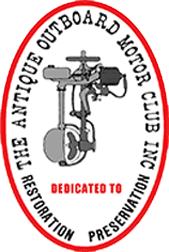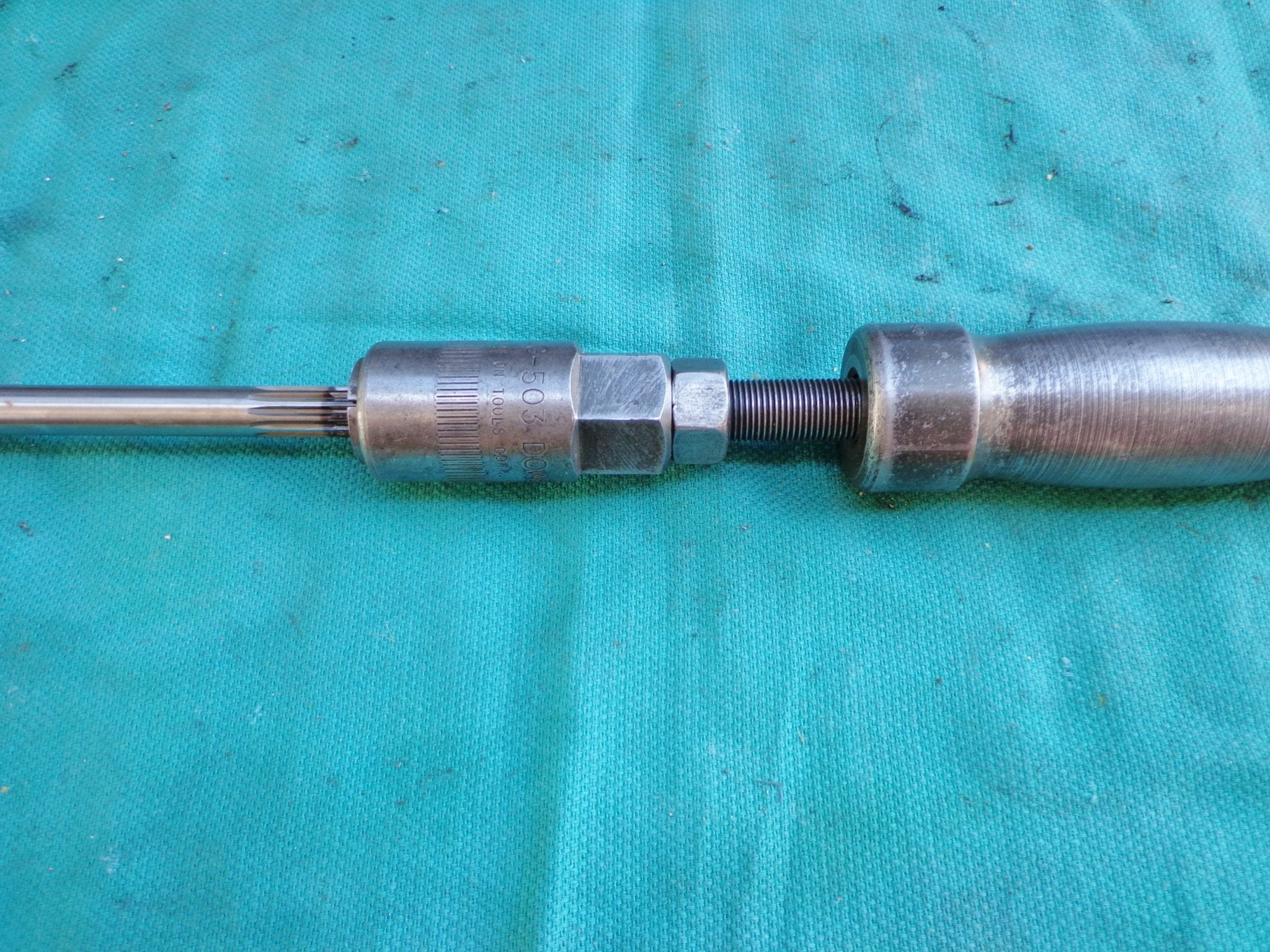Home › Forum › Ask A Member › 1956 15 hp Evinrude driveshaft stuck in powerhead
- This topic has 8 replies, 9 voices, and was last updated 5 years, 1 month ago by
joecb.
-
AuthorPosts
-
November 6, 2020 at 8:42 pm #220268
Lower unit was removed to service water pump and driveshaft stayed in the power head. Fortunately the lower unit end of the drive shaft was splined. Suggestions on how to remove the driveshaft from the power head.
November 6, 2020 at 9:09 pm #220280Releaseall, PB Blaster, WD 40, CLR, or all of the above, plus heat and tons of patience….. no hammering — you may break the bottom end of the crankshaft. For the not so stubborn instances, I’ve clamped vice grips on the shaft about 1/2 ” above where the shaft goes into the receiver and used a pry bar to lift it straight out. Be sure to put a reasonably thick steel plate against the bottom of the block.
The best way for the health of the motor is to disassemble the block and put the bare crankshaft and driveshaft in a pail of Kroil or Kerosene or Diesel for a month or more.
if you’re not going to disassemble the block and are letting releasing agents do the job, turn it upright and/or pistons down to clean out the solvents now and again before they dry and cause more problems, especially with the reeds.
While you’re waiting for the magical moment where the shaft slides out, order a driveshaft top seal and a spare to ensure water never intrudes again !
November 7, 2020 at 5:24 am #220285While this is not my usual MO, sometimes you just don’t want to go through all the above. Maybe time constraints, maybe the motor is too ugly to justify the effort, maybe you’re doing the work for someone else and it would be just too costly. So there is a back door to this problem. Put the key for the water pump back in the drive shaft, which is still sticking out of the exhaust housing. File a slot in the top of the water pump housing, just big enough to allow it to fit over the water pump key on the shaft. Then assemble the pump as you normally would, minus the drive shaft, but line up the impeller key slot with the slot you filed in the housing. Turn the motor over enough to clock the pump key on the drive shaft with the slot you filed in the pump housing. Then, install the lower unit right back over the drive shaft, just the same way it came off. If your impeller pin is round, this is easy. If you have a T-shaped impeller key, it helps to put the key in with a dab of epoxy or red Loctite, and allow it to cure, so the key won’t twist when you’re installing the lower unit.
The other positive thing about this method is that, if you do go through all the work of getting the shaft out of the crank, there is a strong chance that the crank end will be so rusty that there will not be enough spline material left in it to drive the drive shaft. While this method is not mechanically, morally correct, it can sometimes make the difference between a junk engine and one that can still push a boat. You have to make the call.
Long live American manufacturing!
November 7, 2020 at 11:32 pm #220337Great idea bilw.
Long live American ingenuity.November 8, 2020 at 12:01 am #220338November 8, 2020 at 8:00 am #220363If you have no luck with these suggestions, it is best to remove the powerhead. You will need to find someone with a decent air hammer and big ol vise. Find a way to clamp the driveshaft in the vise with the powerhead facing down, but close to the bottom of the vise. Find a way to wedge a pry bar between the powerhead and vise, while someone works the air hammer on the driveshaft as close to the powerhead as possible. Once the driveshaft moves out a bit, you can spray oil on the splines, then tap the driveshaft back down into the powerhead and repeat the air hammer process…
Be careful to have support for the powerhead so it doesn’t fall to the floor, use a flat steel plate between the powerhead and pry bar to ensure the powerhead base isn’t damaged from the pry bar.
Once the driveshaft is out, spray the splines and keep working the driveshaft in and out of the crank until it moves in and out freely and most of the rust is removed. Be sure to coat the driveshaft splines with the OMC moly lube before reinstalling the gearcase during final assembly.November 8, 2020 at 8:29 am #220364I have hung the motor in a tree by the drive shaft. Any number of knots will work. I keep the power head just off the ground in case. Spraying the drive shaft with PB or Kroil, I let it sit for a day or so. Using a soft blow hammer or a 24 block and hammer I will hit the end of the drive shaft in rapid succession. you want some force, but you are really setting up vibration. Apply more juice, and wait a day. Repeat. Normally 3 days or so when I strike the drive shaft, I will hear a change in pitch. Its on the run then. One more application and strike and the power head will be on your toes or the ground. Crude, but functional. I have done 4 successfully so far. The weight of the power head helps with the vibration.
RandyNovember 8, 2020 at 9:26 pm #220419Mumbles, you are talking about pressed in rocker arm studs?
I’ve had success using a slide hammer approach: using a sliding weight on the drive shaft, and a spacer made of a brass washer and a piston pin to protect the crank from getting mushroomed.
November 8, 2020 at 10:30 pm #220421I have heard this , but never tried it. Assuming that the motor will run, loosen the tower to crankcase bolts, shim one side a bit . Start and run the motor for a few minutes. That should “wiggle” loose the shaft spline.
Joe B
-
AuthorPosts
- You must be logged in to reply to this topic.


